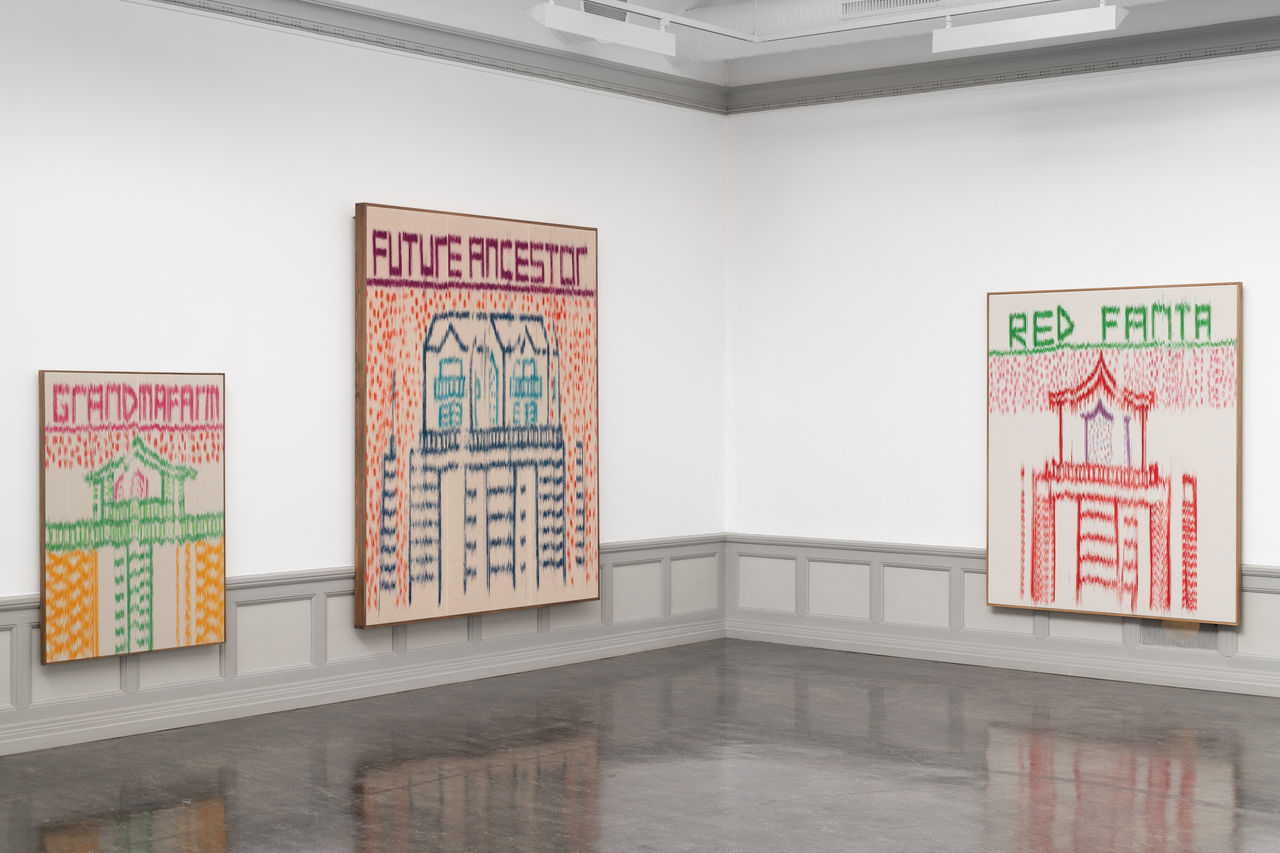
Kunsthall Stavanger er stolte av å presentere We Speak Chicken, den første utstillingen i Norge av den britisk-thailandske kunstneren Mark Corfield-Moore. Utstillingen er et samarbeid med Goldsmiths CCA i London, hvor den ble vist tidligere i år, og presenteres her som en utvidet versjon med flere nye verk laget spesielt for Kunsthall Stavanger.
Corfield-Moore er en maler som inkorporerer veving i sin utforskning av språk, oversettelse og lek. Med et distinkt visuelt språk, gjenkjennelig gjennom bruken av sterke farger og samspillet mellom bilde og tekst, skaper han verk fylt med humor og intimitet. Ved å ta utgangspunkt i både personlige og kollektive historier, samt sin egen erfaring som en del av den britisk-thailandske diasporaen, utforsker Corfield-Moore upåliteligheten i den menneskelige hukommelsen, og lar fortidige hendelser få sitt eget liv i nåtiden.
Corfield-Moore bruker en hybrid metode av maling og ikat – en tradisjonell veveteknikk som han lærte
Kunsthall Stavanger er stolte av å presentere We Speak Chicken, den første utstillingen i Norge av den britisk-thailandske kunstneren Mark Corfield-Moore. Utstillingen er et samarbeid med Goldsmiths CCA i London, hvor den ble vist tidligere i år, og presenteres her som en utvidet versjon med flere nye verk laget spesielt for Kunsthall Stavanger.
Corfield-Moore er en maler som inkorporerer veving i sin utforskning av språk, oversettelse og lek. Med et distinkt visuelt språk, gjenkjennelig gjennom bruken av sterke farger og samspillet mellom bilde og tekst, skaper han verk fylt med humor og intimitet. Ved å ta utgangspunkt i både personlige og kollektive historier, samt sin egen erfaring som en del av den britisk-thailandske diasporaen, utforsker Corfield-Moore upåliteligheten i den menneskelige hukommelsen, og lar fortidige hendelser få sitt eget liv i nåtiden.
Corfield-Moore bruker en hybrid metode av maling og ikat – en tradisjonell veveteknikk som han lærte i Thailand – for å skape "glitchy" bilder som antyder forvrengning og endring. I hvert av de fire galleriene er maleriene løst gruppert etter deres emosjonelle tone, og fremhever temaer som reise og migrasjon, sorg og tap, friksjonen ved å balansere to kulturer samtidig, og forestilte representasjoner av Thailand gjennom personlige minner og gjenfortalte historier.
Arkitektoniske og romlige motiver er til stede i verkene og skildrer strukturer så forskjellige som antikke greske templer, et spisebord, et thailandsk åndehus og det indre hulrommet i en tann. For kunstneren fungerer disse som portaler til en bestemt tid og sted, mens deres grafisk utformede fasader også kan fremkalle følelsen av å være både gjest og utenforstående. I Kunsthall Stavangers gallerier er kunstverkene montert lavt på veggen, noe som forankrer dem og skaper en følelse av rom i rommet.
Utstillingens tittel, We Speak Chicken, refererer til mangelen på et felles språk mellom Corfield-Moore og hans thailandske mor, og peker på matlaging og mat som en felles måte å kommunisere på. Både mat og språk er ting som kan deles, inntas og bearbeides. Følelser kan kjennes i magen når språket ikke strekker til. Som kunstneren uttaler: «Jeg tror jeg replikerer for seeren hvordan jeg føler meg når jeg prøver å snakke med moren min. Enkle ord, grunnleggende toner og følelser; det handler om intimitet, men også om misforståelser og brudd."
Corfield-Moore er interessert i det poetiske potensialet i språket vårt. Ulike fraser dukker opp i hvert verk og fremkaller fragmentert kommunikasjon og en følelse av å være mellom to forståelser. Som i poesi, smelter bilde, tekst og tittel sammen kortvarig for å vekke stadig nye assosiasjoner hos betrakteren.
Med Corfield-Moores språklige lek med metaforer og assosiasjoner, utforsker We Speak Chicken vår universelle og menneskelige lengsel etter tilknytning og tilhørighet. Ved å bruke hukommelse som sitt medium, utforsker han dens iboende skjørhet og formbarhet, samtidig som han inviterer betrakteren til en dialog med sine egne minner.
Mark Corfield-Moore: We Speak Chicken er organisert i samarbeid med Goldsmiths Centre for Contemporary Art, London, hvor den ble vist 12. april til 30. mai 2024.
Kuratorer: Hanne Mugaas og Heather Jones
Utstillingstekst: Heather Jones
Utstillingstekniker: Matt Bryans
Kunsthall Stavanger vil takke kunstneren og Goldsmiths Centre for Contemporary Art.
Mark Corfield-Moore (f. 1988) ble født i Bangkok og bor og jobber i Hastings. Tidligere separatutstillinger inkluderer Goldsmiths CCA, London, UK (2024), Devonshire Collective, Eastbourne, UK (2023); Alzueta Gallery, Barcelona, Spania (2022); Cob Gallery, London, UK (2021); og Wolfson College, Cambridge, UK (2018). Utvalgte gruppeutstillinger inkluderer Walker Art Gallery, Liverpool, UK (2023); Spazio Musa, Torino, Italia (2023); Galerie Slika, Lyon, Frankrike (2023); Saatchi Gallery, London, UK (2022); Swedish Institute, Paris, Frankrike (2022); Royal Academy of Art, London, UK (2022); Turner House, Cardiff, UK (2021); Galerie Britta Rettberg, München, Tyskland (2021); Platform Southwark, London, UK (2021); New Art Centre, Salisbury (2020); Plain Gallery, Milano, Italia (2020); Manchester Art Gallery, Manchester, UK (2020).
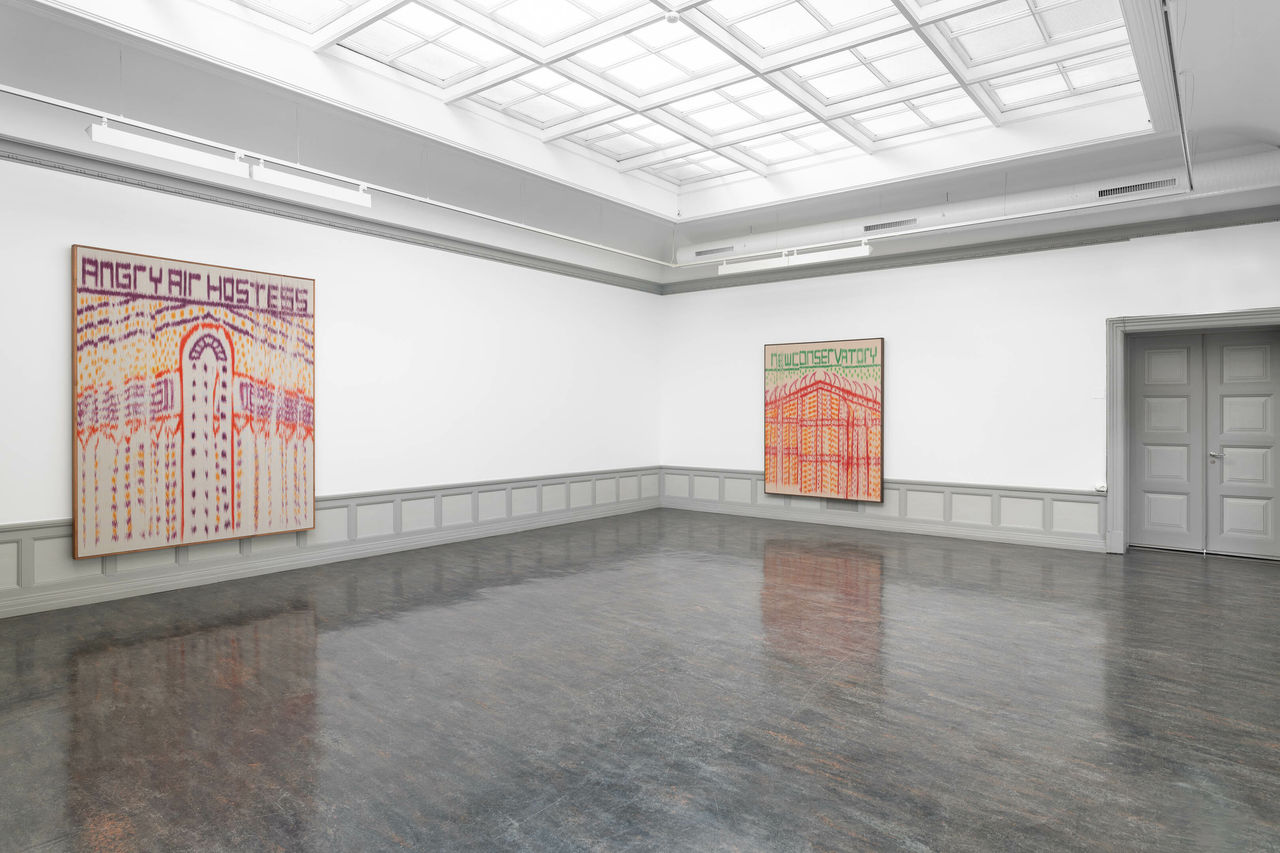
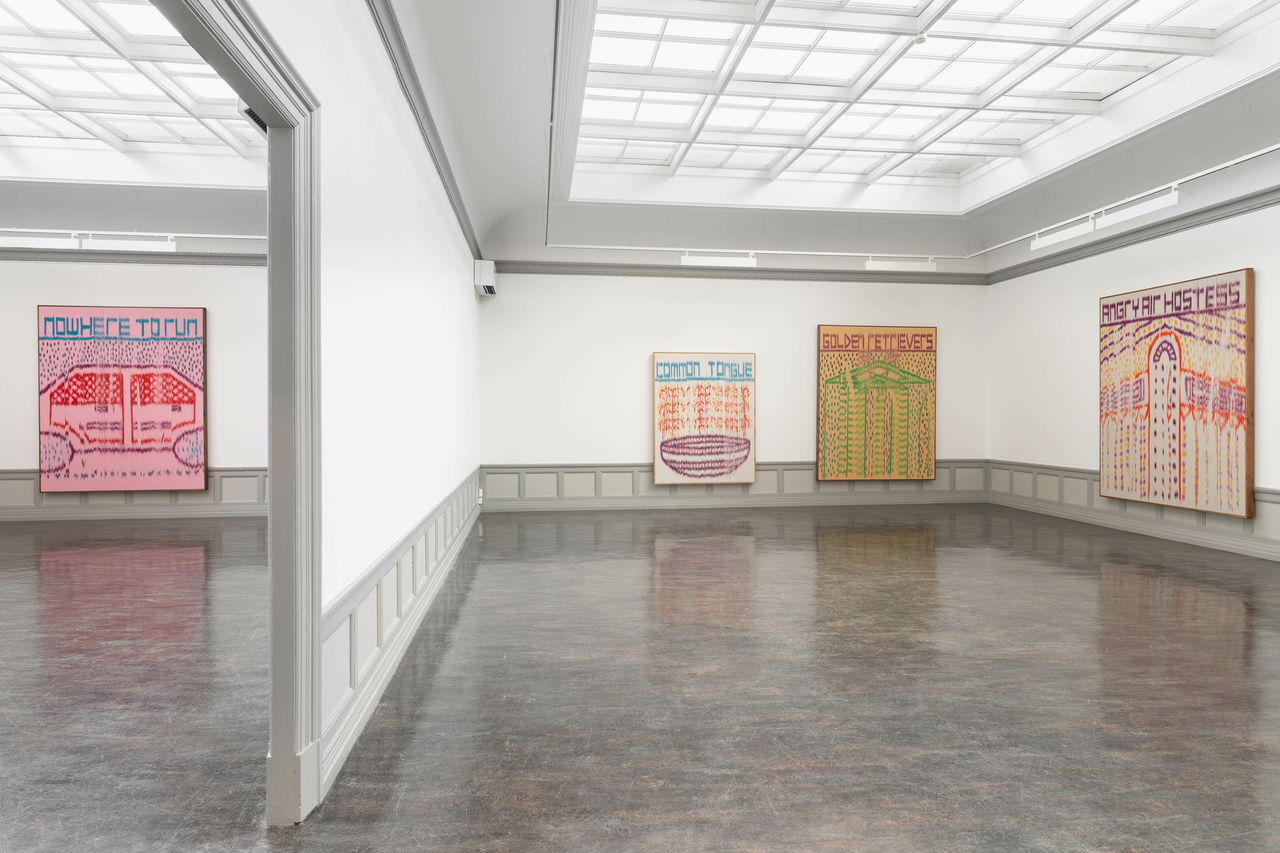
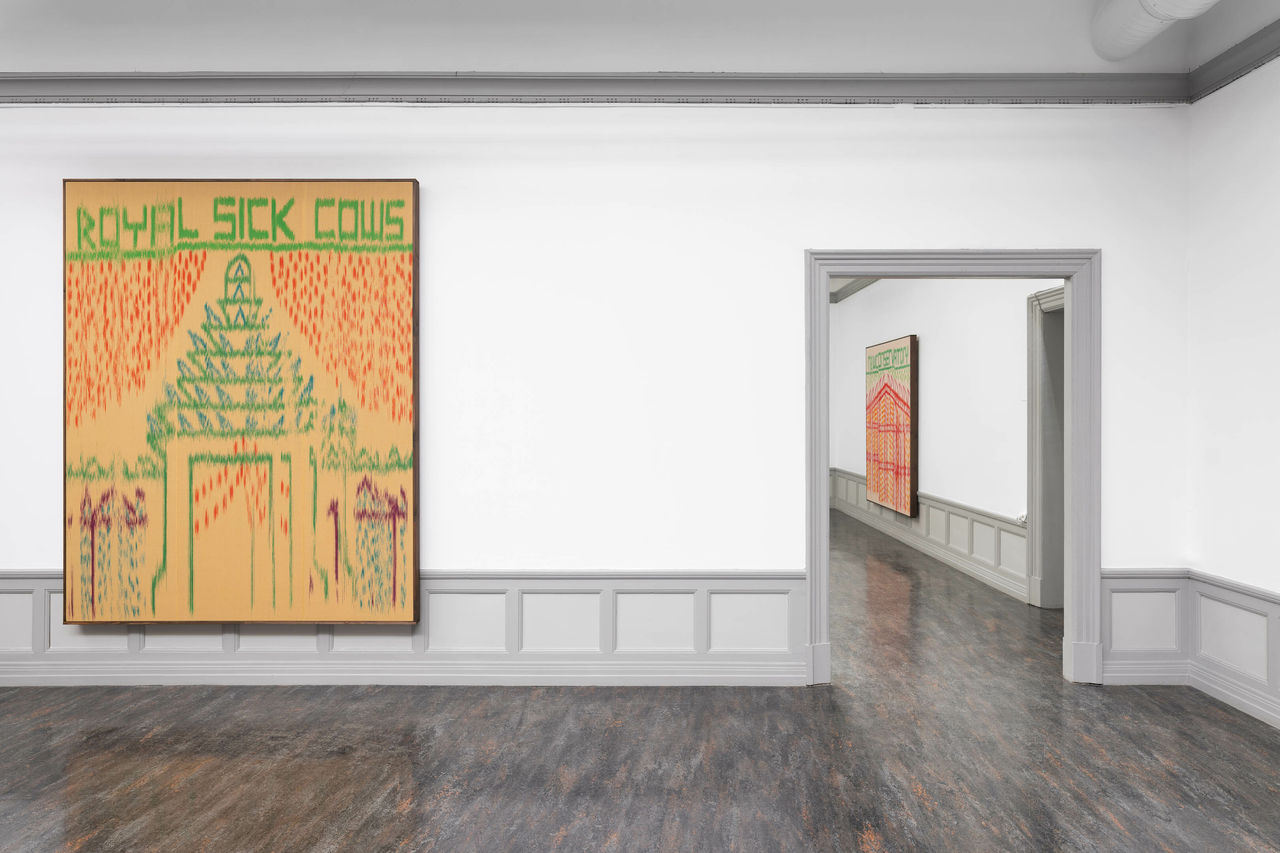
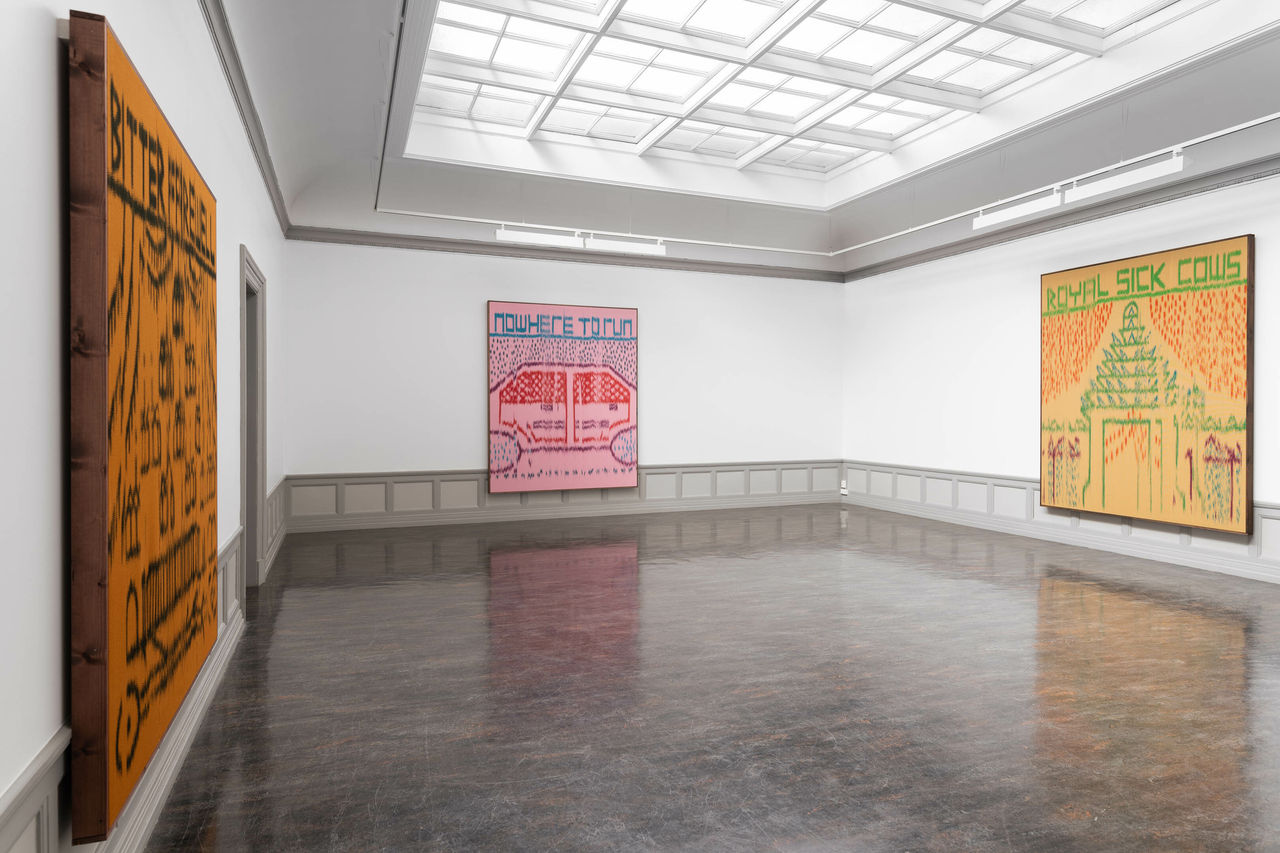
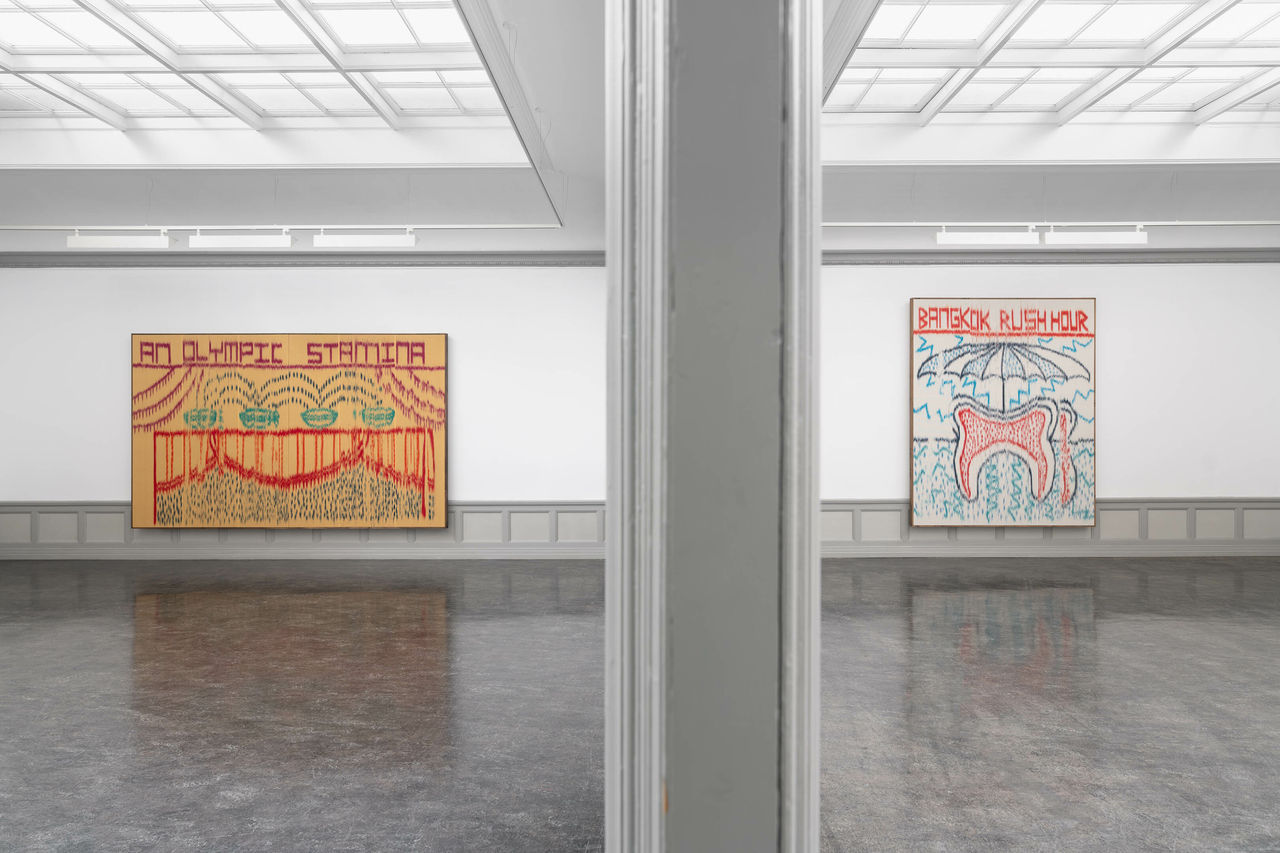

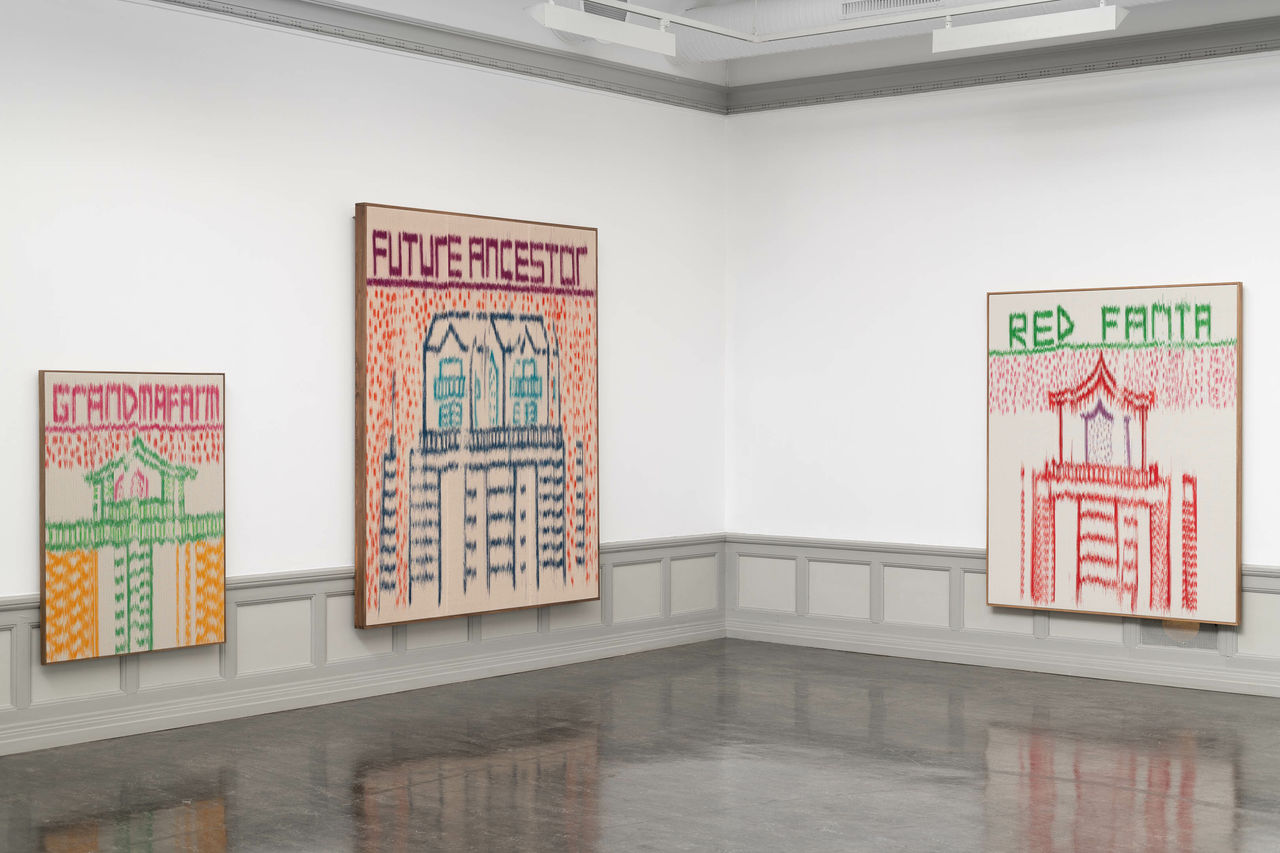
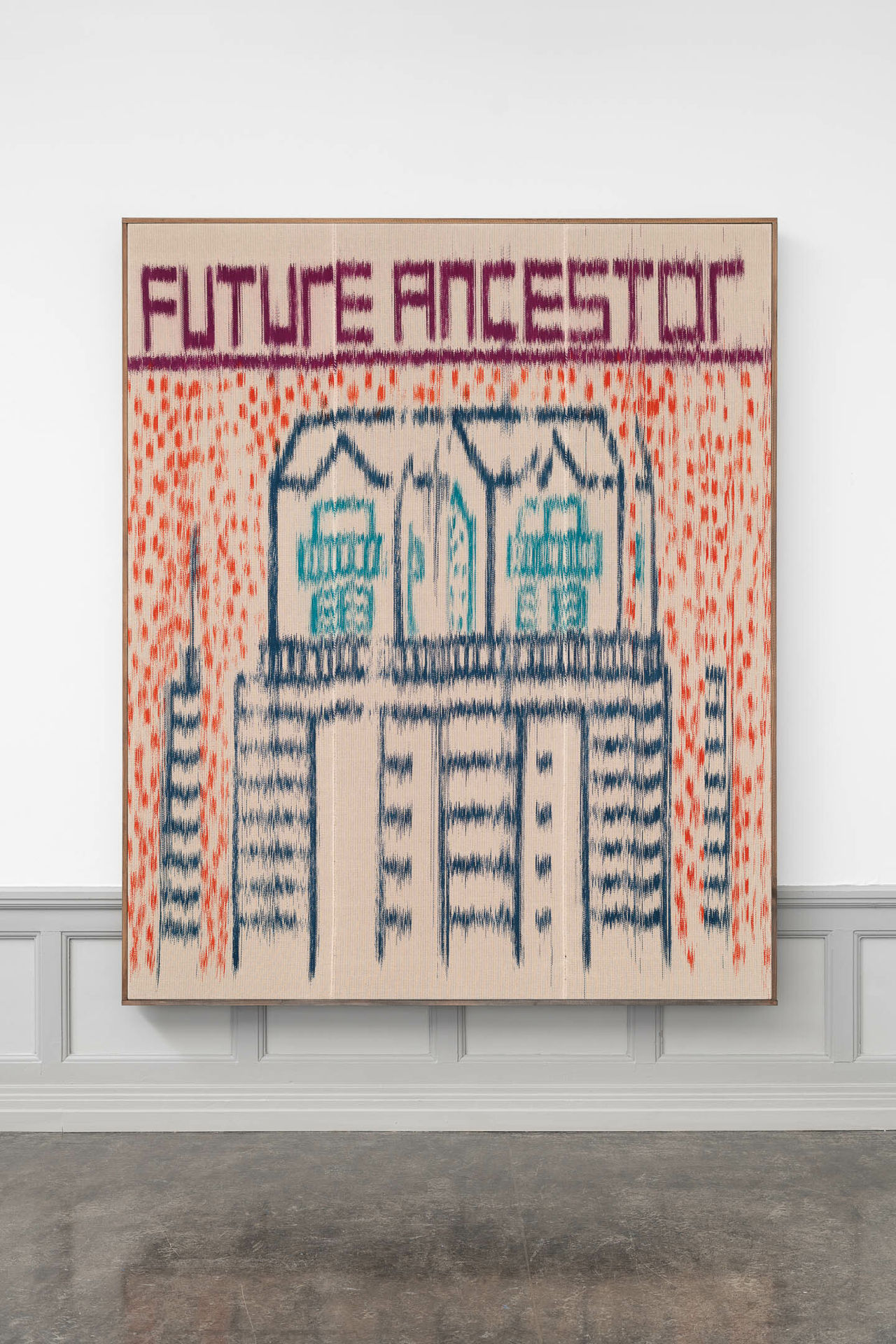
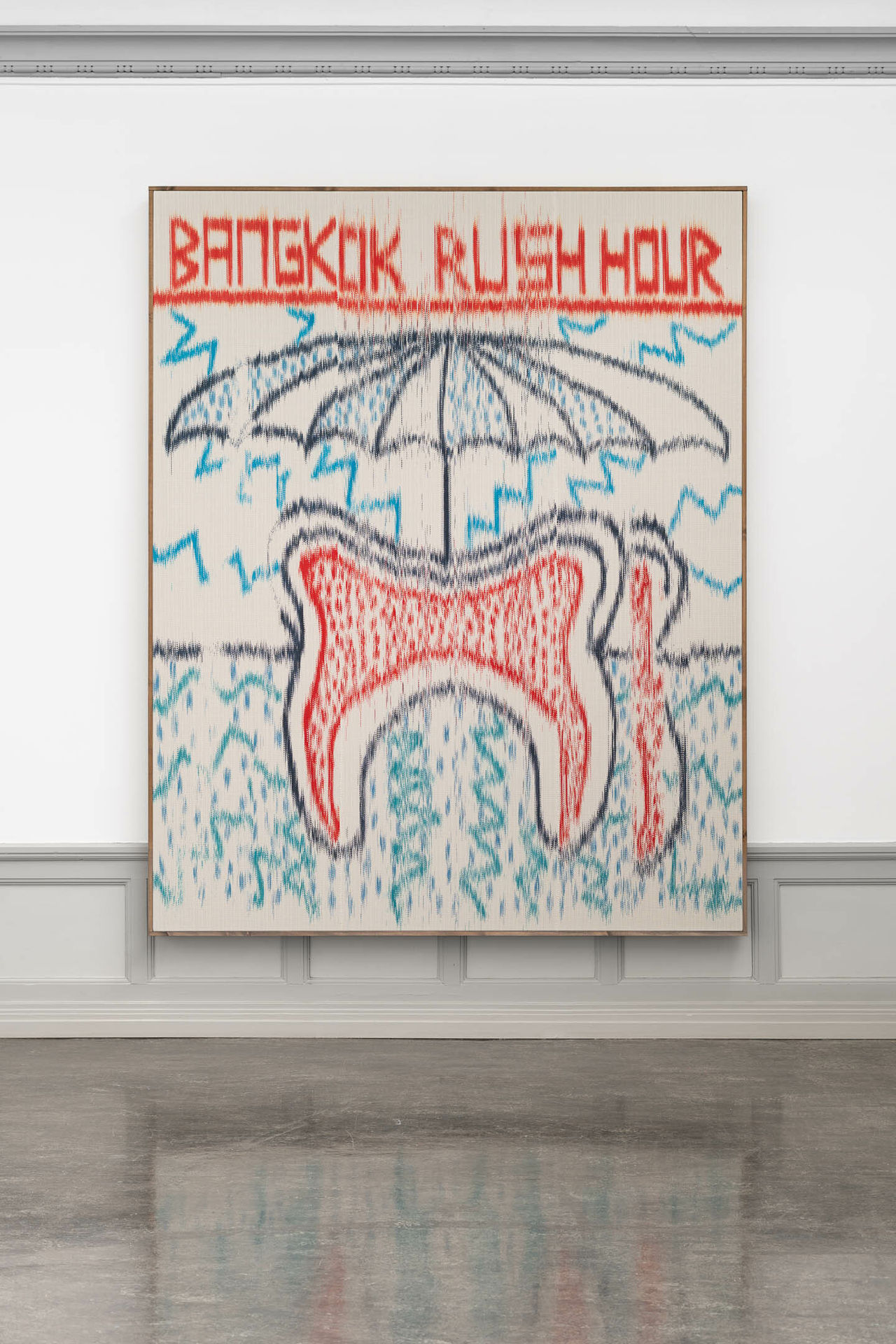
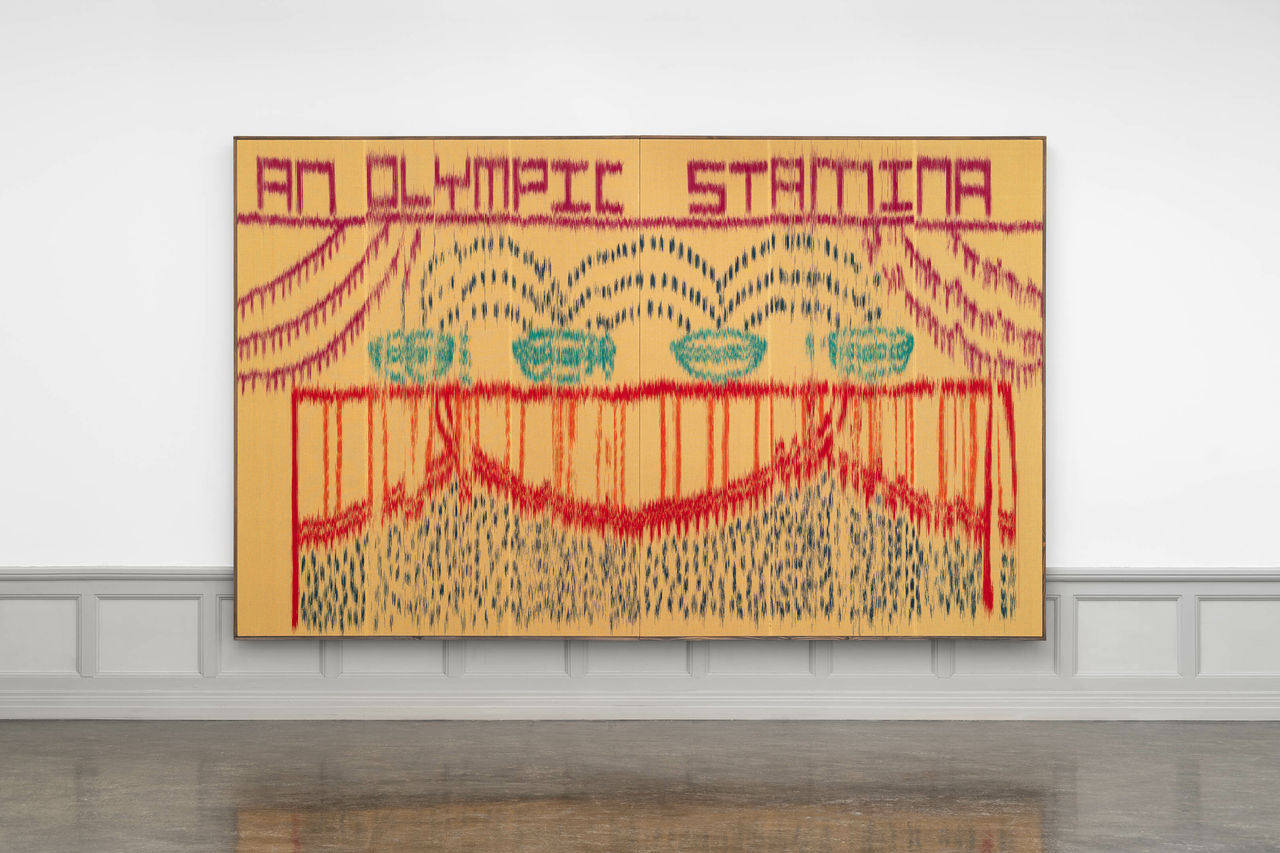
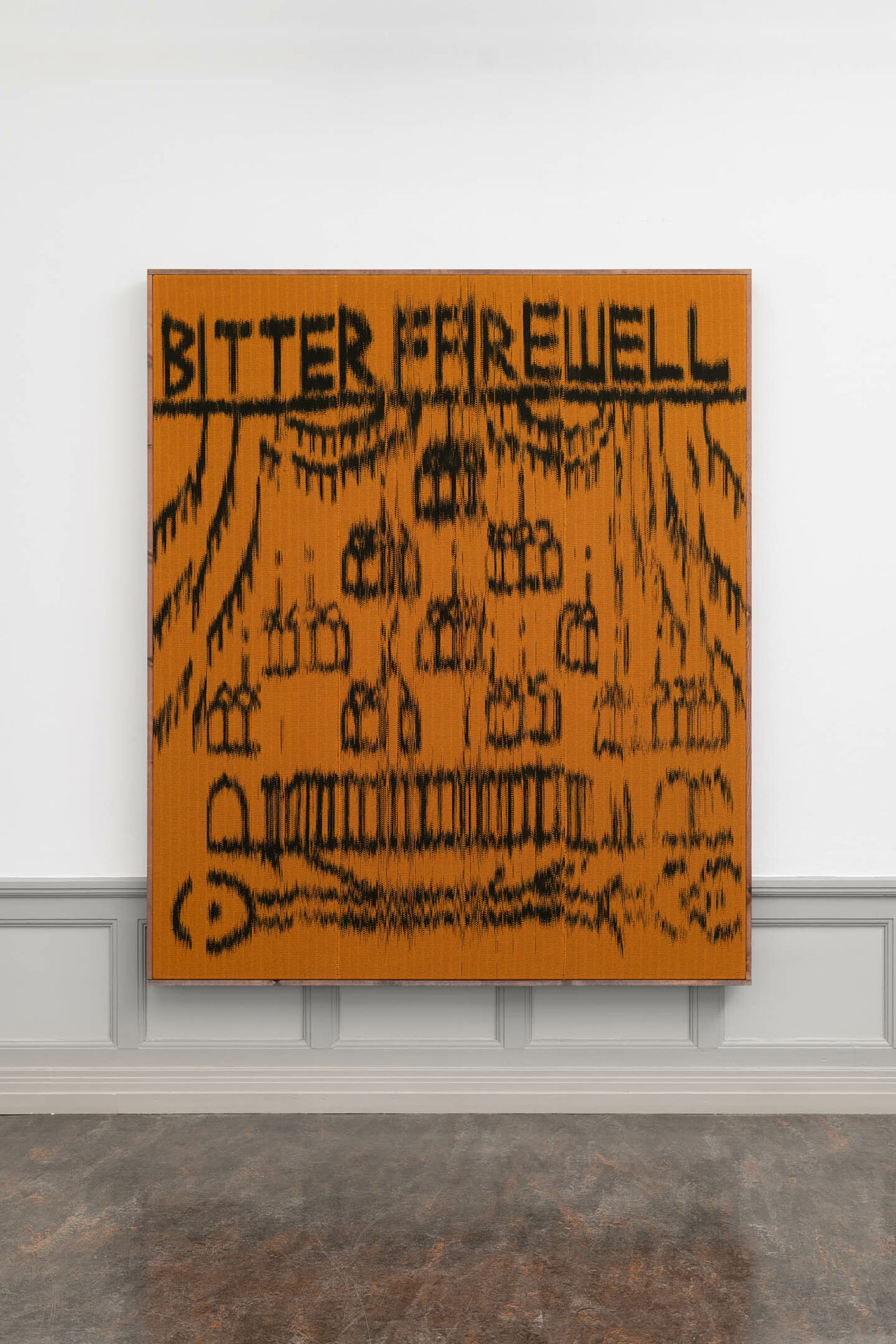
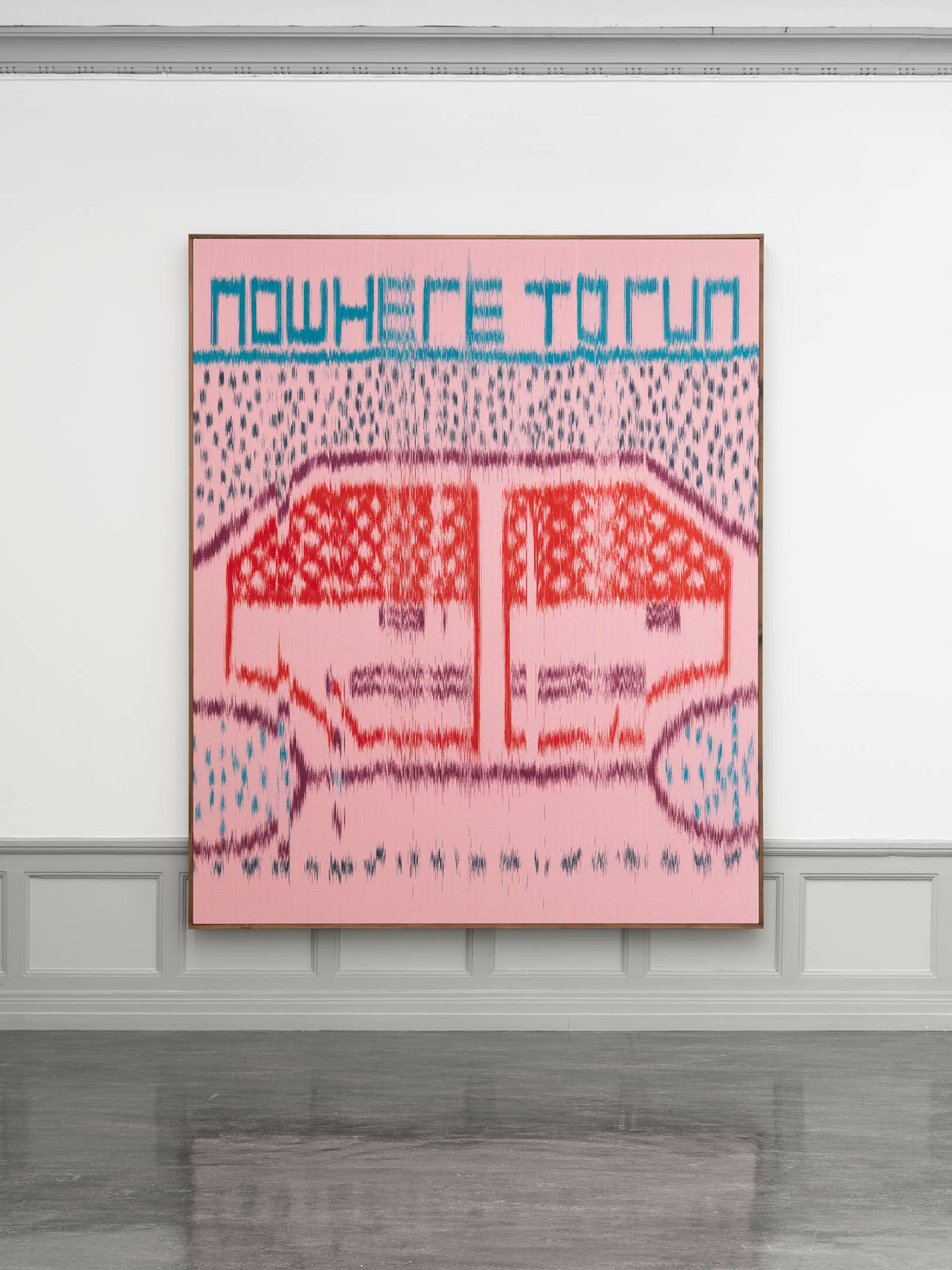

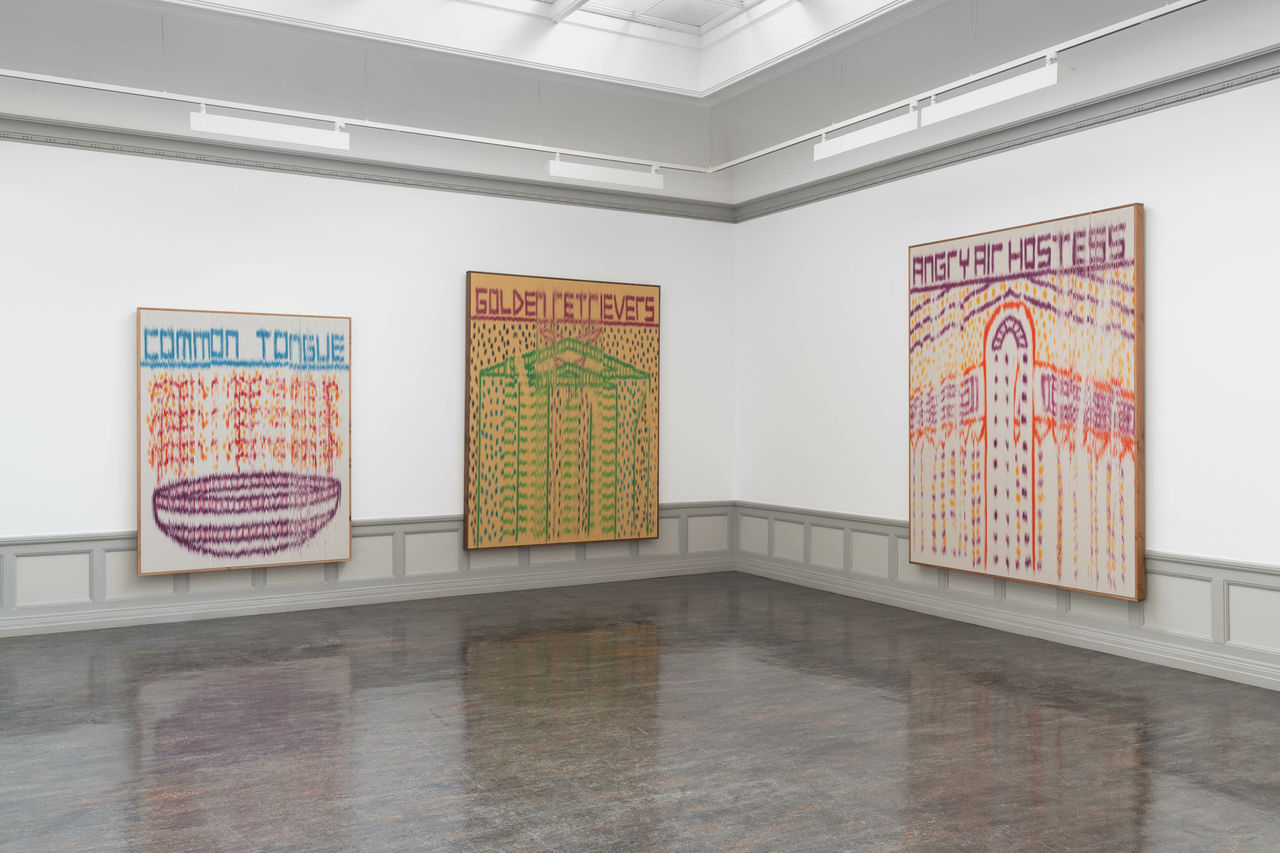
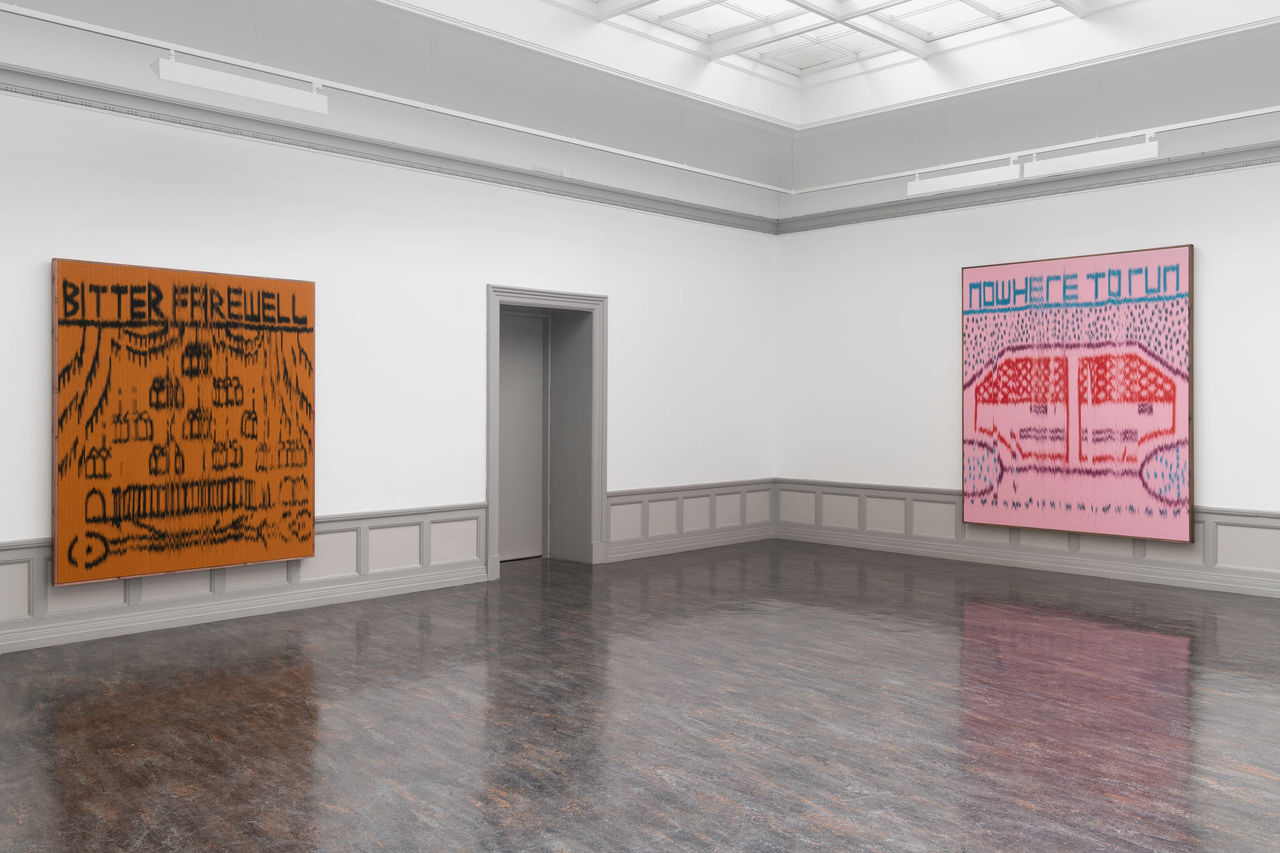
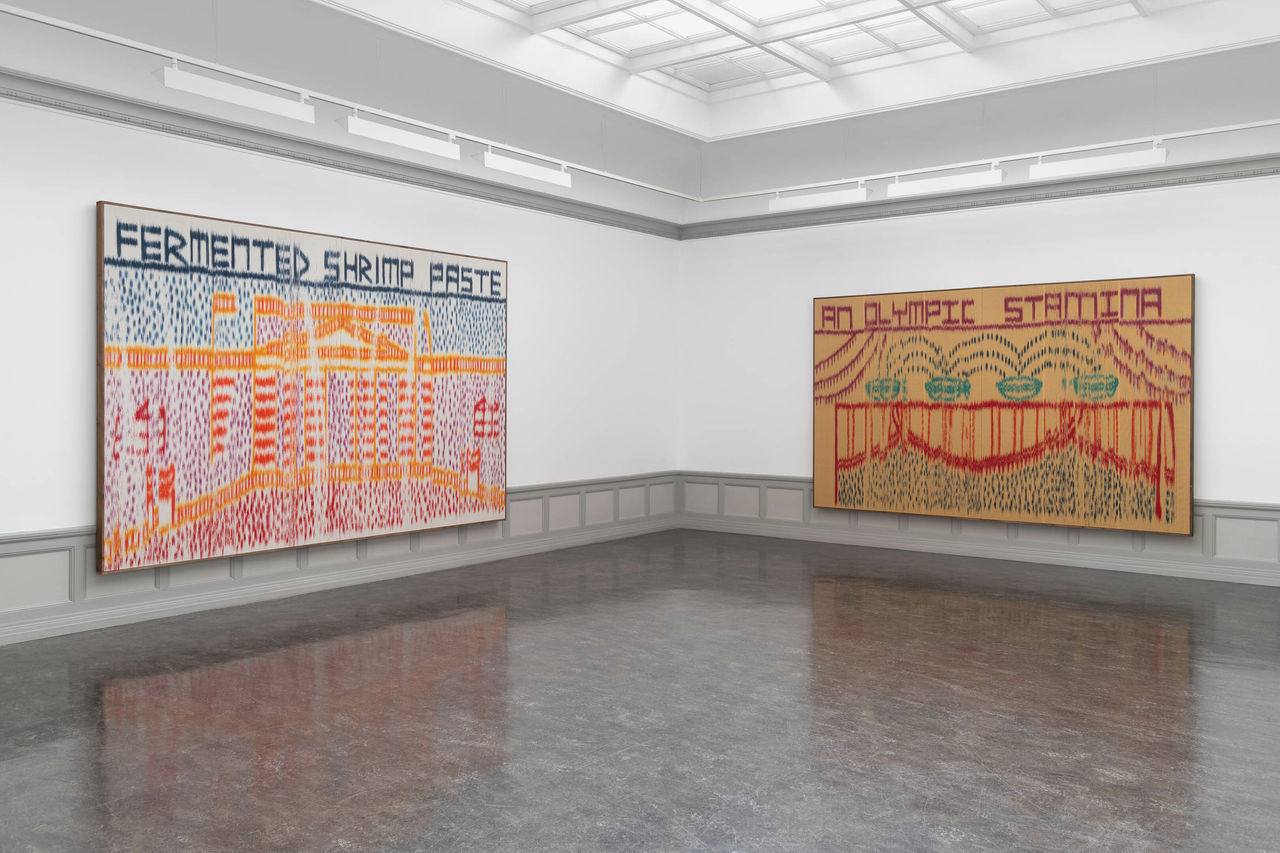

Mark Corfield-Moore, We Speak Chicken (2024), installasjonsoversikt. Foto: Erik Sæter Jørgensen.

Mark Corfield-Moore, We Speak Chicken (2024), installasjonsoversikt. Foto: Erik Sæter Jørgensen.

Mark Corfield-Moore, We Speak Chicken (2024), installasjonsoversikt. Foto: Erik Sæter Jørgensen.

Mark Corfield-Moore, We Speak Chicken (2024), installasjonsoversikt. Foto: Erik Sæter Jørgensen.

Mark Corfield-Moore, We Speak Chicken (2024), installasjonsoversikt. Foto: Erik Sæter Jørgensen.

Mark Corfield-Moore, We Speak Chicken (2024), installasjonsoversikt. Foto: Erik Sæter Jørgensen.

Mark Corfield-Moore, We Speak Chicken (2024), installasjonsoversikt. Foto: Erik Sæter Jørgensen.

Mark Corfield-Moore, We Speak Chicken (2024), installasjonsoversikt. Foto: Erik Sæter Jørgensen.

Mark Corfield-Moore, We Speak Chicken (2024), installasjonsoversikt. Foto: Erik Sæter Jørgensen.

Mark Corfield-Moore, We Speak Chicken (2024), installasjonsoversikt. Foto: Erik Sæter Jørgensen.

Mark Corfield-Moore, We Speak Chicken (2024), installasjonsoversikt. Foto: Erik Sæter Jørgensen.

Mark Corfield-Moore, We Speak Chicken (2024), installasjonsoversikt. Foto: Erik Sæter Jørgensen.

Mark Corfield-Moore, We Speak Chicken (2024), installasjonsoversikt. Foto: Erik Sæter Jørgensen.

Mark Corfield-Moore, We Speak Chicken (2024), installasjonsoversikt. Foto: Erik Sæter Jørgensen.

Mark Corfield-Moore, We Speak Chicken (2024), installasjonsoversikt. Foto: Erik Sæter Jørgensen.

Mark Corfield-Moore, We Speak Chicken (2024), installasjonsoversikt. Foto: Erik Sæter Jørgensen.